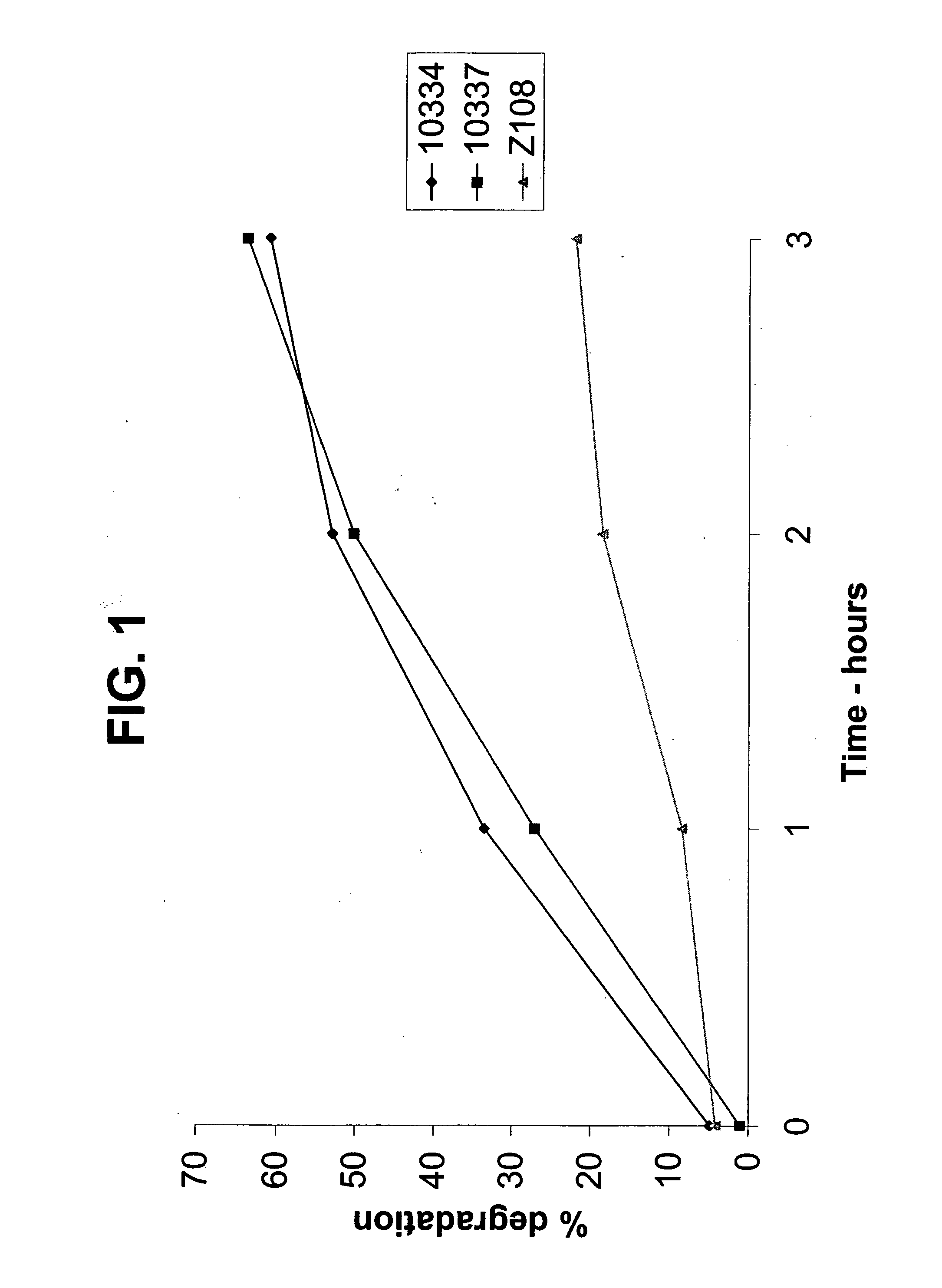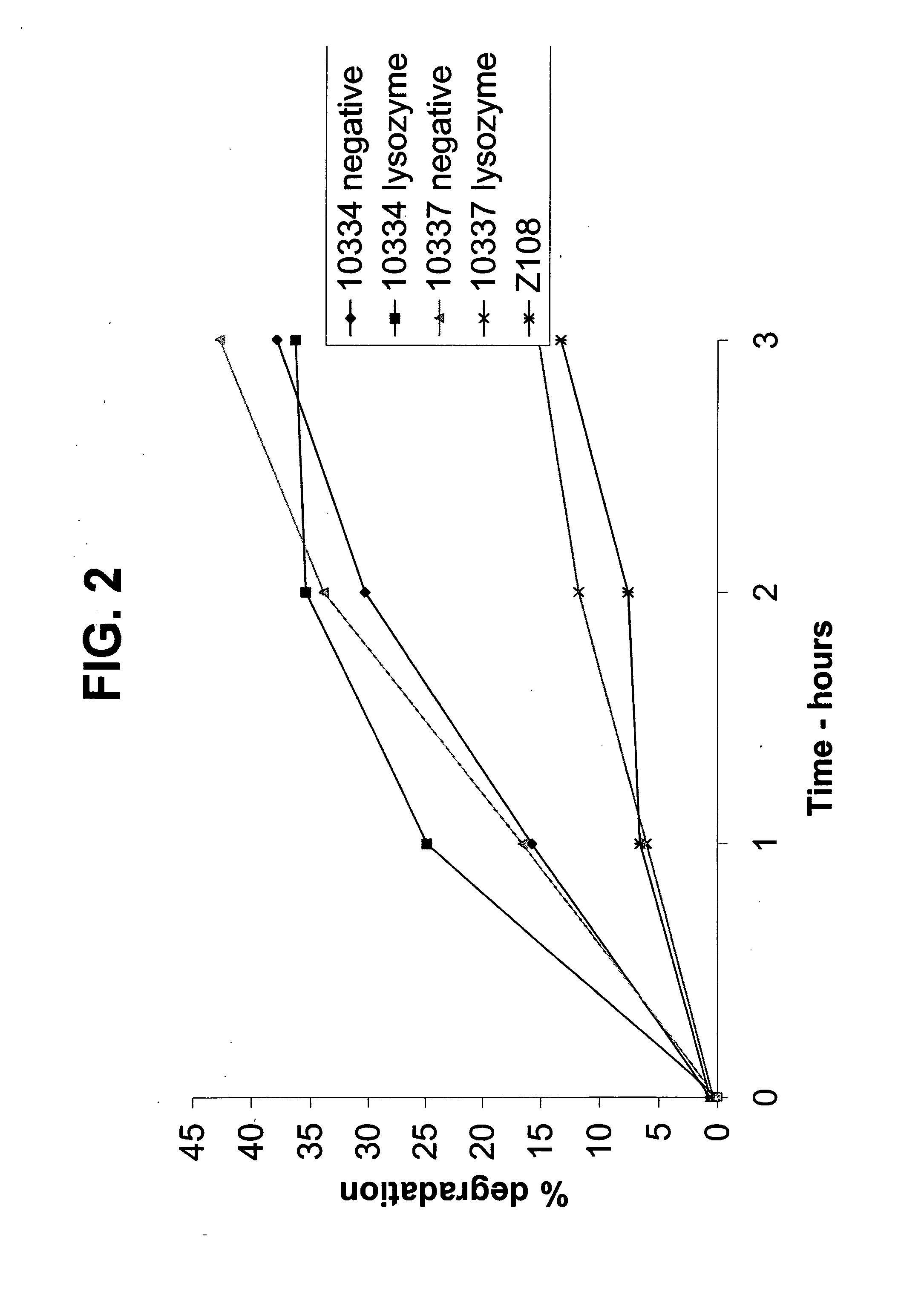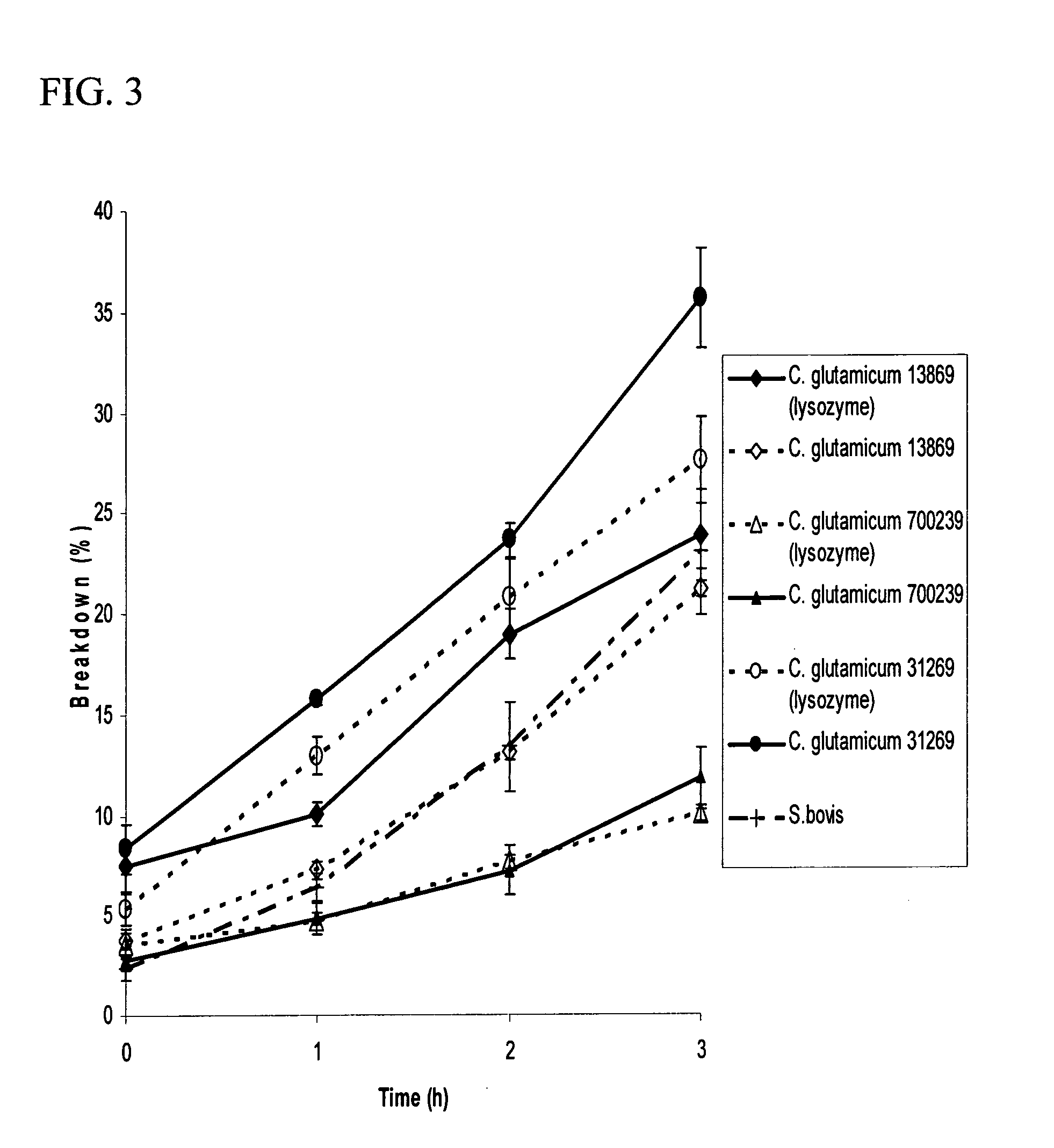Method of growing bacteria to deliver bioactive compounds to the intestine of ruminants
a technology of ruminant intestine and bioactive compounds, which is applied in the field of growing bacteria to deliver bioactive compounds to the intestine of ruminants, can solve the problems of limiting the interest in intestinal functional probiotics in ruminants, wasteful process of host ruminants, and low survival rate of bacterial preparations, so as to reduce rumen degradability and adequate resistance to rumen degradation
- Summary
- Abstract
- Description
- Claims
- Application Information
AI Technical Summary
Benefits of technology
Problems solved by technology
Method used
Image
Examples
example 1
Susceptibility of C. glutamicum Strains to Ruminal Degradation via Protozoal Predation
[0070]The degradation of C. glutamicum and S. ruminantium (representing an “average” rumen bacteria) was determined in rumen fluid according to the method described by Wallace et al., Br. J. Nutr., 58, 313-323 (1987).
[0071]Corynebacteria glutamicum strains (ATCC 13761 and ATCC 13869 were grown in aerobic Wallace and McPherson medium. S. ruminantium Z108 was grown in anaerobic Wallace and McPherson medium. The Wallace and McPherson media and the preparation thereof are disclosed by the above-referenced Wallace et al. journal article. Cultures were grown overnight at 39 C. Cells were harvested by centrifuging at 1000 g×10 min at room temperature. Cells were resuspended in anaerobic Coleman's buffer containing 5 mM C14 L-leucine and incubated overnight (OD=1.0) to label bacterial protein. A sample (1 ml) was removed and placed into 0.25 ml 25% TCA for protein determination. Two 50 μl aliquots were pla...
example 2
C. glutamicum Growth in the Presence of Low Lysozyme Levels
[0078]Wallace and McPherson non C14 media was prepared (24×7 ml). To each of 4 sets of tubes, 0.5 ml of filter sterilized lysozyme (0.1; 1.0; 10; 100; or 1000 μg / ml) was added. To a final set of 4 tubes, 0.5 ml of Coleman's D media was added (Control). Tubes were inoculated with cultures of C. glutamicum strain ATCC 13761 and incubated at 39° C. for 48 hr and OD (650 nm) was measured for each organism at 24 and 48 hr.
[0079]Strain 13761 grew well at the lowest two levels of lysozyme exposure (0.1 and 1 μg / ml). Growth was cut in half with 100 μg / ml and completely inhibited at 1000 μg / ml.
example 3
Effect of Growth of C. glutamicum Strains in the Presence of Lysozyme on Susceptibility to Protozoal Predation
[0080]Methodology was essentially the same as Experiment 1, except that treatments consisted of C. glutamicum strains ATCC 13761 and ATCC 13869 grown as in Experiment 1 or in the presence of lysozyme (0.5 ml of 0.25 μg / ml lysozyme; 16.7 μg / ml final concentration). As in Experiment 1, S. ruminantium Z108 was used as a check organism.
[0081]The results are shown in FIG. 2. Degradation was lower in this experiment than in Experiment 1 for all organisms. When strains were grown without lysozyme (native) disappearance over the 3 hr. incubation period was 37.9 and 42.8% for strains 13761 and 13869 respectively compared to 13.3% for S. ruminantium Z108. However, when grown in the presence of lysozyme, 3 hr degradation was reduced to 15.2% for strain 13869 but unaffected for strain 13761 (36.3%). Effective degradability at a rumen turnover rate of 0.07 hr−1 was 53.8 and 64.7% for str...
PUM
 Login to View More
Login to View More Abstract
Description
Claims
Application Information
 Login to View More
Login to View More - R&D
- Intellectual Property
- Life Sciences
- Materials
- Tech Scout
- Unparalleled Data Quality
- Higher Quality Content
- 60% Fewer Hallucinations
Browse by: Latest US Patents, China's latest patents, Technical Efficacy Thesaurus, Application Domain, Technology Topic, Popular Technical Reports.
© 2025 PatSnap. All rights reserved.Legal|Privacy policy|Modern Slavery Act Transparency Statement|Sitemap|About US| Contact US: help@patsnap.com



